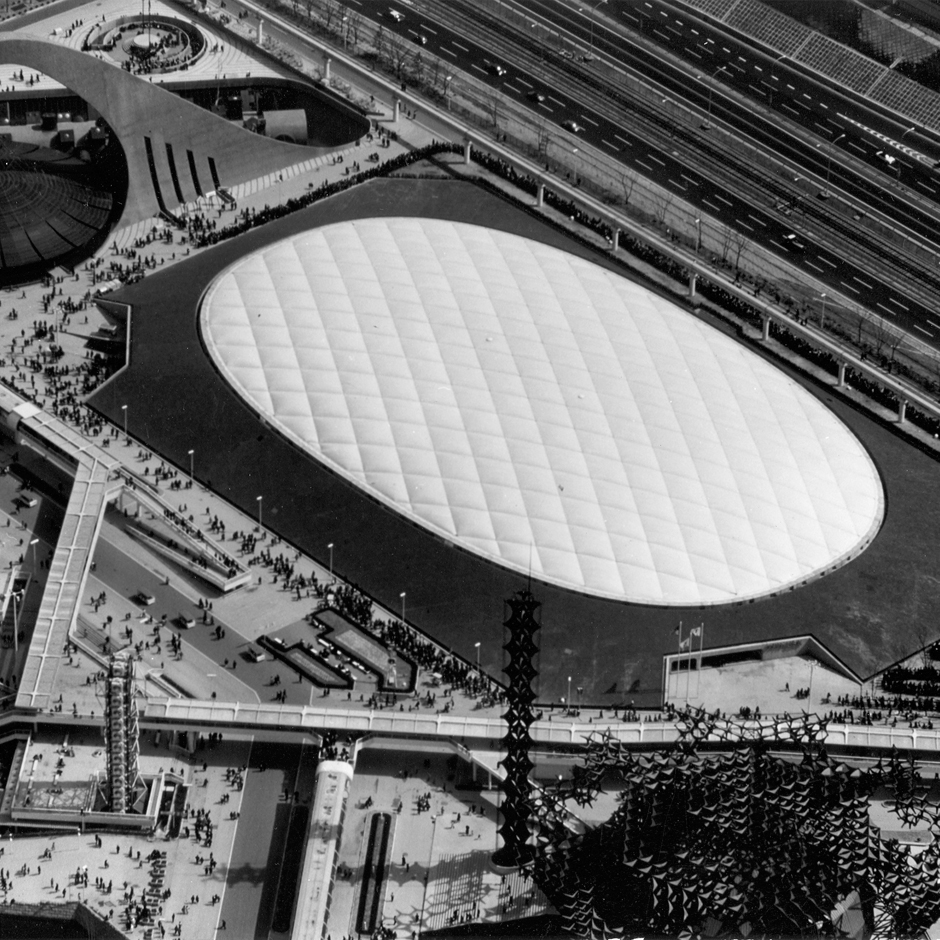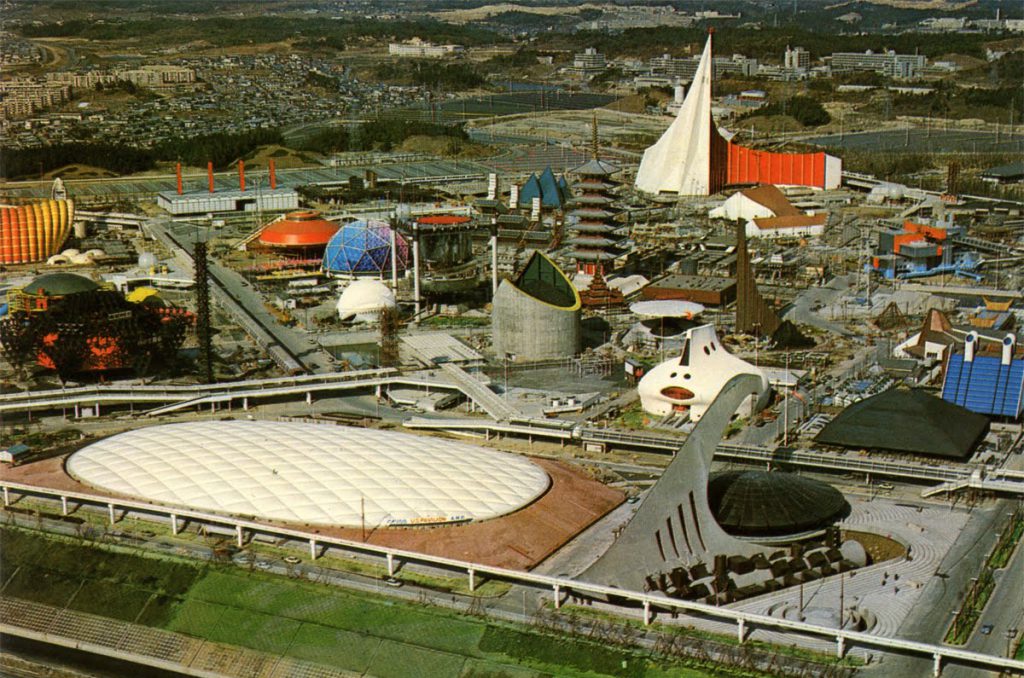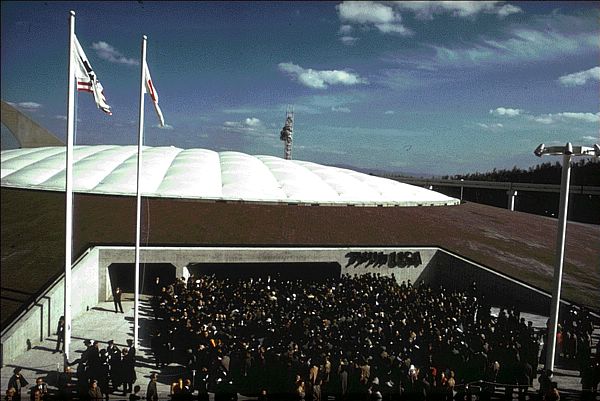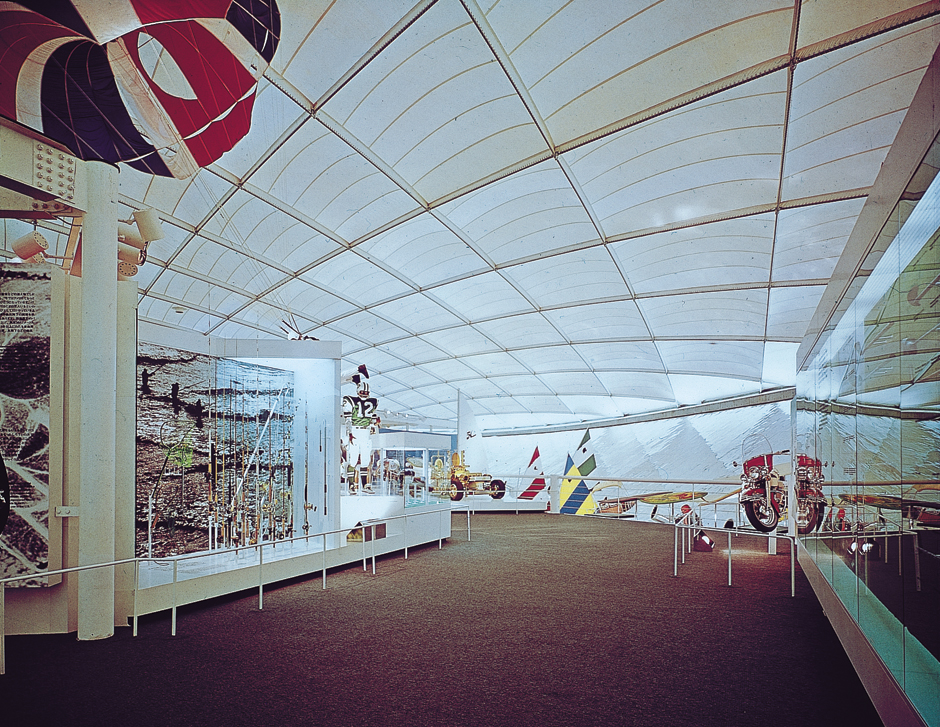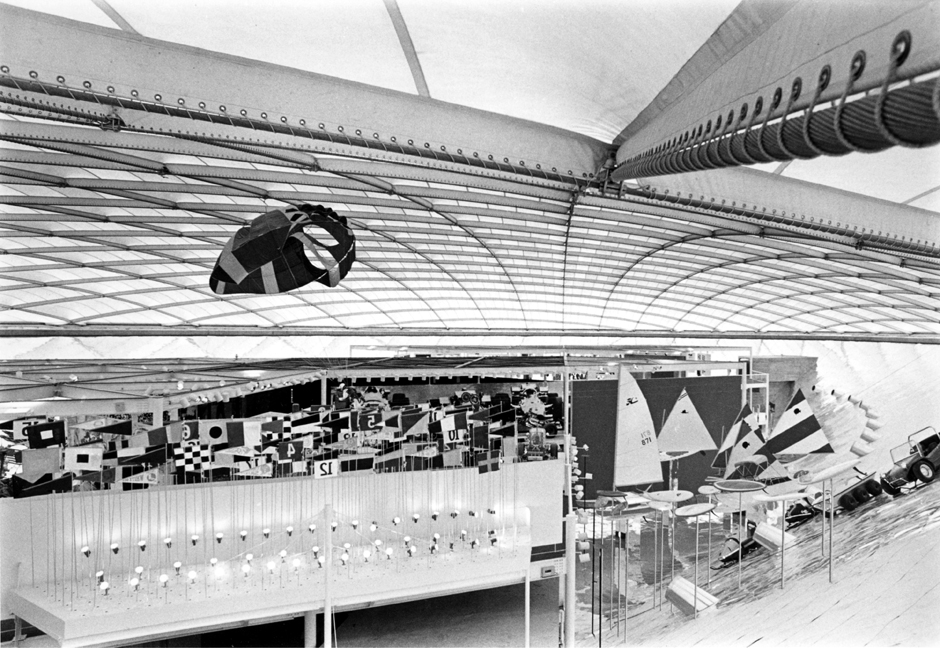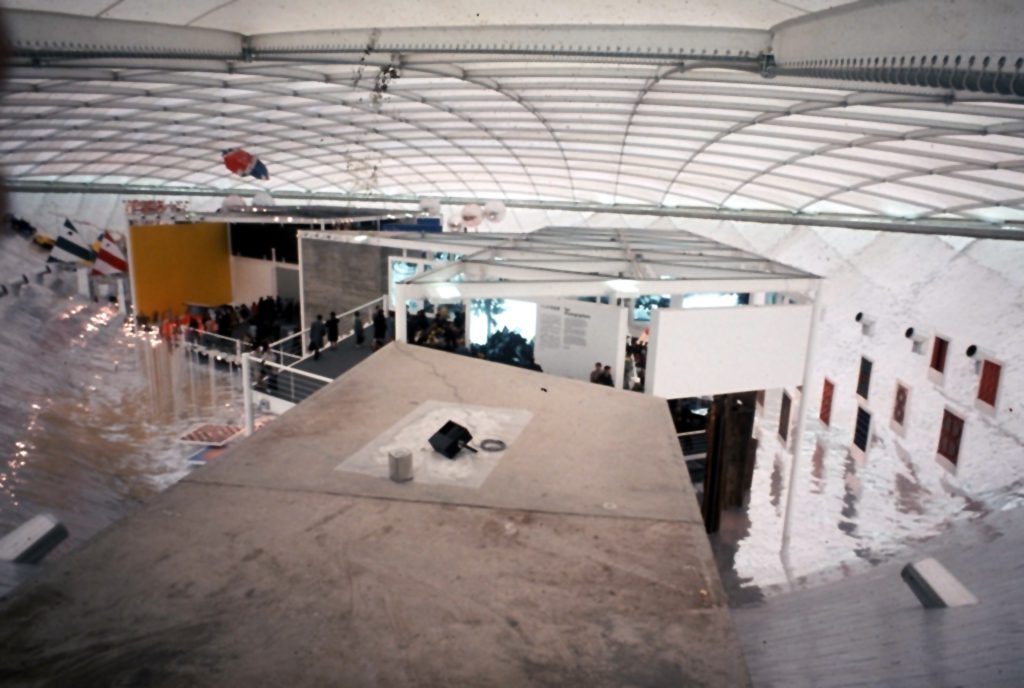Engineer: David Geiger-Horst Berger.
The U.S. Pavilion at EXPO features one of the first air supported cable roofs. Super-elliptical in shape and spanning 262 by 460 ft, the roof employs cables 20 feet on center and arrayed in a diamond pattern. There is no central tension ring. Cables are anchored to a concrete compression ring resting on, but not anchored to, an earth berm. The berm’s shallow slope and the roof’s flat dome (23 ft rise) greatly reduces wind loading.
El Pabellón de los Estados Unidos de la EXPO cuenta con uno de los primeras cubiertas tensadas soportadas a partir de aire presurizado. Con una forma elíptica que abarca 262 por 460 pies, la cubierta se construye con cables de 20 pies dispuestos geométricamente con una forma de diamante y sin anillo anillo central. El cableado se ancla a una estructura exterior de hormigón armado que funciona a compresión, sin estar anclada a ella. La carga del viento y la pendiente de la cubierta (23 pies de altura) reduce considerablemente la carga del viento.
David Geiger – Civil Engineering – ASCE, March 1970More info at: Columbia University
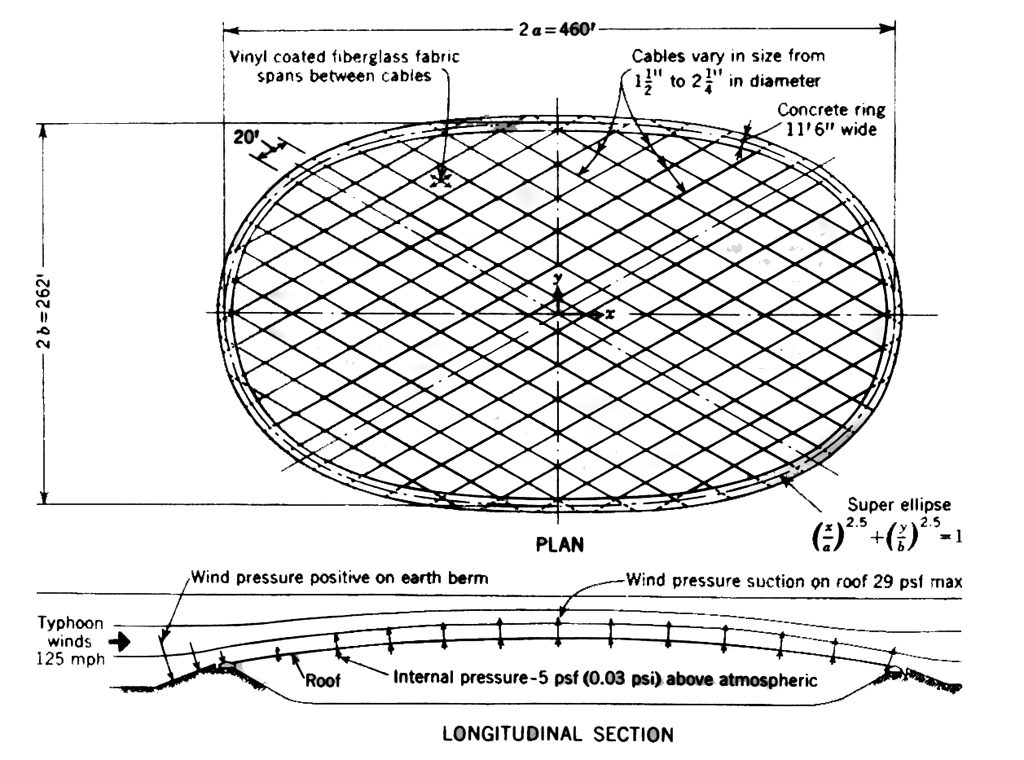
A unique collaboration between Davis Brody Bond and exhibit designers, Charmayeff & Geismar, the elliptical U.S. Pavilion at EXPO ‘70 was partially sunk into the ground and roofed by the largest clear-span air-supported cable roof ever built. Made of a translucent, vinyl-coated, fiberglass fabric, the roof provided filtered natural light by day, and glowed at night. The fabric weighed one pound per square foot and was kept inflated by an internal pressure of approximately three-hundredths of a pound per square inch above the outside atmospheric pressure. Hollowed out of the earth, the interior structure housed seven major exhibits under the general heading “Image of America.” It rose two levels with a combined floor area of 100,000 square feet and could accommodate up to 10,000 visitors an hour.
El pabellón elípitico de los Estados Unidos de la EXPO ’70 fue el resultado de la colaboración entre Davis Brody Bond y los diseñadores de exposiciones, Charmayeff & Geismar. Fue parcialmente enterrado en el suelo y se cubrió con una de las estructuras tensadas más grandes del mundo. Se utilizaron materiales de tejido de fibra de vidrio translucido, recubierto de vinilo filtrando la luz natural e iluminándose por la noche. La tela pesaba una libra por pie cuadrado y se mantenía inflada a través de una presión interna de aproximadamente tres centésimas de una libra por pulgada cuadrada por encima de la presión atmosférica exterior. En el interior se llegaron a albergar siete grandes exhibiciones bajo el título de “Imagen de América”. Con una superficie de más de 9.000 metros cuadrados, podía llegar a acoger hasta 10.000 visitantes por hora.
Text by Davis Brody Bond / Texto por Davis Brody Bond.
